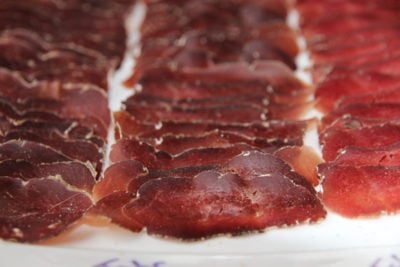Can't find anything on the forum specifically covering this, happy to be appropriately directed if there is... however, having made all sorts of things from pigs, and most of it very successfully, I'll admit that I have struggled with air drying - am in Carms, West Wales. Whether hams or sausages, we've never had much better than a 50% success rate if done outside - and by outside I mean in or under 'dry' sheds... obviously this improves if done in a house, and more so with an extractor or a dehumidifier.
Despite having had good ideas about many things, which even Mrs GNJC will admit after a drink or two , I can't come up with any way of dramatically increasing my outside curing success rate, and it's going to be expensive and inconvenient to rely on electricity.
, I can't come up with any way of dramatically increasing my outside curing success rate, and it's going to be expensive and inconvenient to rely on electricity.
So I'll be very grateful for any tested and proven suggestions for successfully air drying / curing pork foods in a pretty damp climate.
Despite having had good ideas about many things, which even Mrs GNJC will admit after a drink or two
 , I can't come up with any way of dramatically increasing my outside curing success rate, and it's going to be expensive and inconvenient to rely on electricity.
, I can't come up with any way of dramatically increasing my outside curing success rate, and it's going to be expensive and inconvenient to rely on electricity.So I'll be very grateful for any tested and proven suggestions for successfully air drying / curing pork foods in a pretty damp climate.



